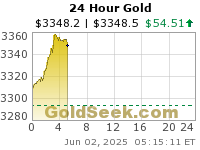First of all, I wish to thank my friend and colleague TrendXplorer (outstanding website IndexSwingTrader) for making publicly available the ThinkorSwim code that I reworked for use with the True Strength Index (TSI) indicator in this post. If you are interested in reading more about this indicator from his website, click here.
The indicator we will look at in this post is the TSI (7,4), but with an interesting twist. The twist is that while the shape of the TSI is normal, the scaling seen on the far right side of the indicator is different. Quite different.
What this hybrid of the TSI does is consider the readings of the TSI over the past 200 weeks and then figures out the mathematical standard deviations of the TSI readings.
So in this case, a measurement of zero is the mean.
And we should not be surprised to observe that the TSI spends a lot of time - a lot of the 200 past bars - very closely just above and below ZERO. Readings in the range of, say 35 or -35, are not as common as those nearer ZERO. Not surprisingly this hybrid TSI identifies these less frequent readings as being somewhat above or below the mean - perhaps near the 1.0/-1.0 standard deviation level. And so on.
Let's take our first look at this new hybrid TSI with a 15 year weekly chart of the gold futures (/GC).
 |
| Click on any chart to ENLARGE |
The bigger picture perspective this chart provides is a sense - over 15 years - of how often the TSI reaches either 2 standard deviations above or below the mean. And just as importantly, once it reaches such an extreme, how long does it stay there?
My other chart for this post gives us a closer look at the current situation. We would be hard pressed to find more than 5 times in the past 15 years the TSI nearly reached the -2.0 standard deviation. Yet look where we are now.
Gold has been turning north this evening and the current TSI reading has changed color from gray to purple - indicating that momentum is beginning to bullishly reverse direction.
Of course, anything can happen from here. But for what its worth, this standard deviation reading of the TSI tells me gold is ready to rocket.
Fingers crossed.

![[Most Recent Quotes from www.kitco.com]](http://www.kitconet.com/images/quotes_special.gif)




Damn, John, you are good. You are very good.
ReplyDeleteJoe
Hi John
ReplyDeleteI just looked at the gold/swiss franc weekly ratio (for some analysts a leading ind.) - it has approached the top of a contracting triangle on numerous occasions - wouldn't take much to pop above. The daily is currently respecting a downward channel.
I use Constance Brown's composite index to find extremes and divergences - very similar reading to the tsi on the weekly chart. On the daily no reversal yet.
Also a possible w5 of abc correction on the daily at fib extensions and my own relative strength ind. shows a crossover between the eurusd and the usdchf.
Hang in there!
Great work! I would love to see you use this indicator more in your blog, against other asset classes as well.
ReplyDeleteOne thing I found very interesting is the huge spike in the indicator well before the ultimate low in Gold's secular bear market in 1999. The price spike that was seen in spot Gold months after your indicator spiked proved to be the beginning of Gold's secular bull market. This indicator foreshadowed that bottom.
Keep up the great work! Thanks!
Thanks for your analysis, John.
ReplyDeleteAnother technique worth investigating is whether or not sigma levels are capable of signaling bullish cq bearish mode and continuation patterns while in an up- or downtrend. This could be a rewarding feature, especially for long term analysis / investments. See the example chart. Anyhow, I think it's a nice hypothesis.
http://screencast.com/t/iGexmkCL